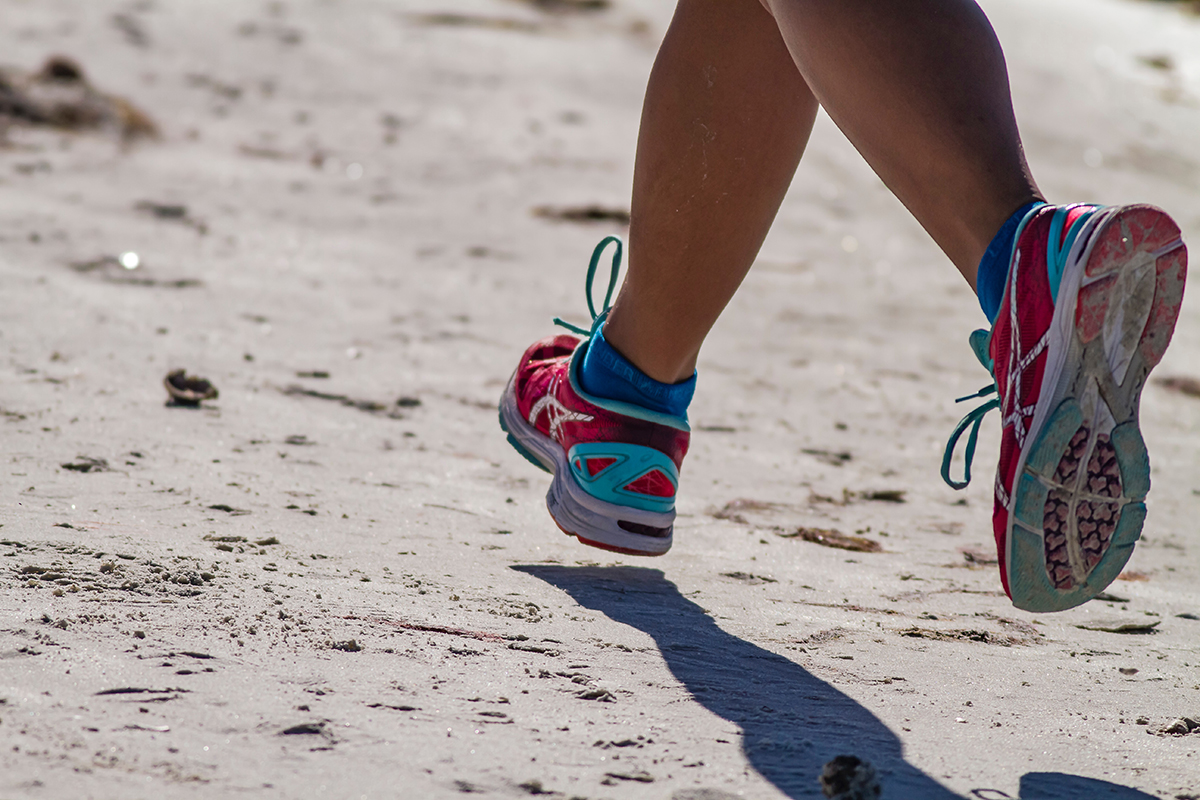

I love to run and have for many years. For me, it’s the easiest way to stay fit—I can do it anytime, virtually anywhere, and best of all, no pesky gym membership is required. However, as I’ve gotten older, I find myself more fickle than ever with my shoes. I need cushion, stability, and support to prevent overuse injuries and keep me on the road.
Videos by Outdoors
Truth be told, I feel a bit like a middle-aged Cinderella, trying to locate that elusive glass slipper. Just when I feel like I’ve found my stride in a shoe that gives me what I need, the manufacturer changes the model, it doesn’t work for my foot, and I’m back to the starting line.
So what should middle-aged runners keep in mind when they’re on a quest for the perfect shoe? Here are a few tips, tricks, and suggestions.
Get the Fit Right

First things first, the way your shoes fit—or don’t fit—can make or break your running routine.
“Our feet are our foundation, and especially for runners, shoes are an important part of the whole package,” said Dr. Kyle Fiala, DPM at the Missouri Orthopaedic Institute, University of Missouri Health Care. “A good fitting shoe will be comfortable but also potentially prevent overuse injuries we typically see.”
While it’s important to consider your running style and average mileage (more on that in a moment) the basic fit is what matters most. Luckily, Dr. Fiala has an easy rule to help find the right fit.
“As far as a fitting goes, my rule of thumb is that when you try on the shoe, you should have a space about the width of your thumb from the top of your big toe to the end of the shoe,” he said. “That way, you know you’ll have plenty of room.”
If you’re in shoes that are too snug or too loose, you risk developing painful blisters and toenail hematomas. Giving your feet some breathing room can help lessen the painful microtraumas that come with thousands of foot strikes and reduce the chance you’ll be sidelined.
Another tip for a great fit? Timing.
“I tell my patients to go for fittings at the end of the day,” said Dr. Fiala. “That’s when our feet are the most swollen or the biggest. That way you have an idea of what that true fit will be.”
Get Expert Advice

You don’t have to go it alone when it comes to choosing your next running shoes, nor should you, Dr. Fiala told me.
“I recommend going to a reputable running store in your community,” he said. “Often, it’s not necessarily the big-box stores but more boutique or independent spots. They can help people get the right shoe versus reading a review and buying something online.”
While Dr. Fiala generally steers patients toward shoes with good, sturdy midsole support and mesh uppers for airflow, there’s a whole host of options out there that offer a wide range of benefits across brands and models. Extra cushion helps absorb shock, aiding runners looking to increase mileage. Additional stability can help those who have flatter feet or who overpronate, which is when the ankle rotates too far inward while running.
Gait, foot arch, and where your foot strikes the ground while you’re running should all also be considered when selecting a running shoe. Staff at a great running store will take all those factors into account before making recommendations for you based on your foot shape, stride, and mechanics.
Stores dedicated to running often have a great exchange policy as well, so if you get the shoes home, give them a couple of test runs, and the shoes don’t work out, you can trade them in for a new pair that better suits your needs.
Shoe Models Change

Running helps you tune into what’s going on with your body. As a runner, you become more observant about how you’re feeling, and this is important when you’re hitting the road in new shoes.
“Even with patients who have always been loyal to one brand or even one model, there can be subtle design changes that can throw them off,” said Dr. Fiala. “Sometimes, patients notice that because they start having pain.”
Changes in shoe design as subtle as a couple of millimeters on the heel drop can make your previous favorite shoe a no-go. It’s frustrating, but being aware of this reality and the signs that it’s happening to you can help prevent injuries Dr. Fiala sees in patients who wear the wrong shoes. Injuries may include those aforementioned blisters and toenail woes to more serious issues like plantar fasciitis and peroneal tendonitis.
Know When It’s Time for a Retread

Once you’ve found shoes that work for you and your stride, it can be tough to give them up for a fresh pair. Eventually, though, all good things must come to an end, and running shoes must periodically be replaced.
“Our shoes are kind of like tires,” says Dr. Fiala. “If you do a lot of running and put in a lot of miles, that shoe is going to wear out faster than if you’re an occasional runner.”
Signs it’s time to say goodbye include decreased tread, loss of bounce or cushion, and the ability to twist or bend your shoes upward and in half. Pain is also a surefire sign that your shoes are at the end of their shelf life.
“If you’ve been doing your normal routine and start developing new aches and pains, that might also be an indication it’s time to change out the shoes,” Dr. Fiala added.
Final Considerations

With the popularity of programs like Couch to 5k and step challenges, Dr. Fiala sees increasing numbers of middle-aged people trying out running for the first time. While shoes aren’t going to fix all your running woes, they shouldn’t hamper or hinder your progress, either.
He advises his patients to also consider nutrition. For middle-aged runners, calcium and vitamin D are essential to maintain bone health. For beginners, his advice is to keep a mild, moderate pace and low mileage to start out.
“Go slow, and ease into it,” he said. “I love the enthusiasm, but we all need to walk before we run.”









